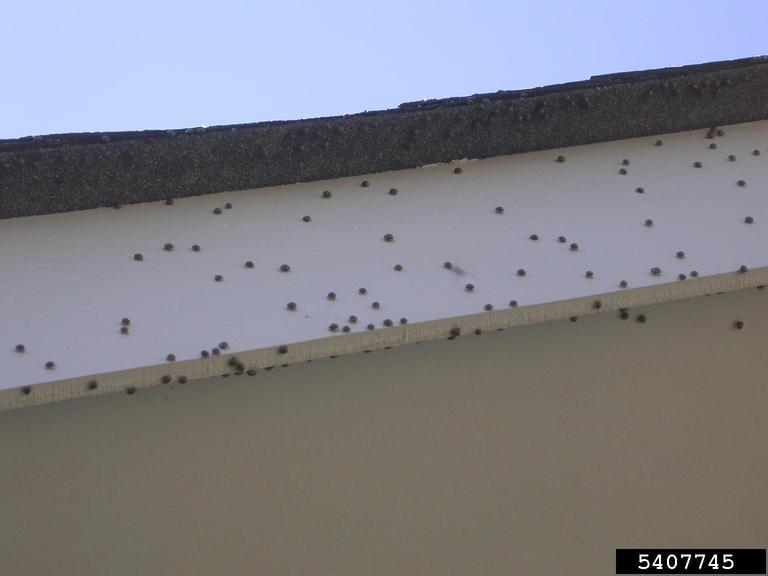 |
| Kudzu bugs (Megacoptera criberia) on raspberry plants at the Piedmont Research Station, Salisbury, NC. Photo: PRS. |
My Monday morning began with two phone calls about the same thing: kudzu bugs on caneberries. Both calls came from western North Carolina, but kudzu bugs are widespread throughout the southeast. See
here for a map of kudzu bug distribution from the
Megacoptera Working Group. Kudzu bugs (
Megacoptera criberia) are yet another invasive species from eastern Asia that has been detected in the southeastern US in recent years. Kudzu bugs appear to specialize on legumes, including cultivated beans and kudzu, and can cause cause economic damage to soybeans. My NC State Entomology colleague, Dominic Reisig, has published
extensive information on kudzu bug at his
blog. Interestingly, both caneberry sites that prompted my morning calls were also near soybeans.
 |
| Raspberry plants at the Piedmont Research Station, Salisbury, NC. Photo: PRS. |
Kudzu bugs are also nuisance pests. Like multicolored Asian ladybeetles and brown marmorated stink bugs, they congregate in structures to overwinter. Also like these other two home invading invasives, kudzu bugs release stinky defensive chemicals when disturbed. Migration to overwintering sites is likely happening right now, and this may be at least part of the reason we are currently seeing them on caneberries. Primocanes may be attractive because they are relatively young when compared other surrounding vegetation.
 |
| Kudzu bug aggregation on a home. Photo: Danial Suiter, University of Georgia, via Bugwood Network. |
It's unclear if kudzu bugs will feed on blackberries and raspberries. Kudzu bugs have piercing mouthparts, so damage is often not visible right away. Following kudzu bug feeding in soybeans, lesions appear on stems (their preferred feeding site). Despite the fact that adult kudzu bugs can be present in soybeans in very high numbers, they do not appear to cause economic damage in that crop unless they are reproducing and nymphs are present. Nymphs look markedly different than adult kudzu bugs. They are smaller and fuzzy (see below). The
treatment threshold in soybeans is 15 nymphs per 15 sweeps. Soybean plants are extremely good at compensating for damage throughout their growing season, which likely contributes to this relatively high threshold.
 |
| Kudzu bug feeding lesions on soybean stem. Photo: Dominic Reisig, NC State Entomology |
 |
| Late season kudzu bug damage on soybeans at the Sandhills Research Station. Photo: Jeremy Martin, Superintendent. |
 |
| Kudzu bug nymphs on soybean. Reproductively active kudzy populations (where nymphs are present) can cause damage in soybeans. |
If kudzu bugs are observed on caneberries, scout stems for lesions and nymphs. If either are present, this would represent a new host for this insect, and that information should be communicated to
me and your
extension agent. If kudzu bugs are not feeding on caneberries, they may just be stopping en route to their overwintering sites (structures, leaf litter, and other sheltered areas). This past spring, kudzu bugs were observed aggregated on several non host plants after exiting their overwintering sites.






1 comment:
Great article I never heard about these bugs before but thats crazy. Very interesting article and thanks for the share. :) Great blog as well found other great articles as well. Keep writing I'll be back.
Post a Comment